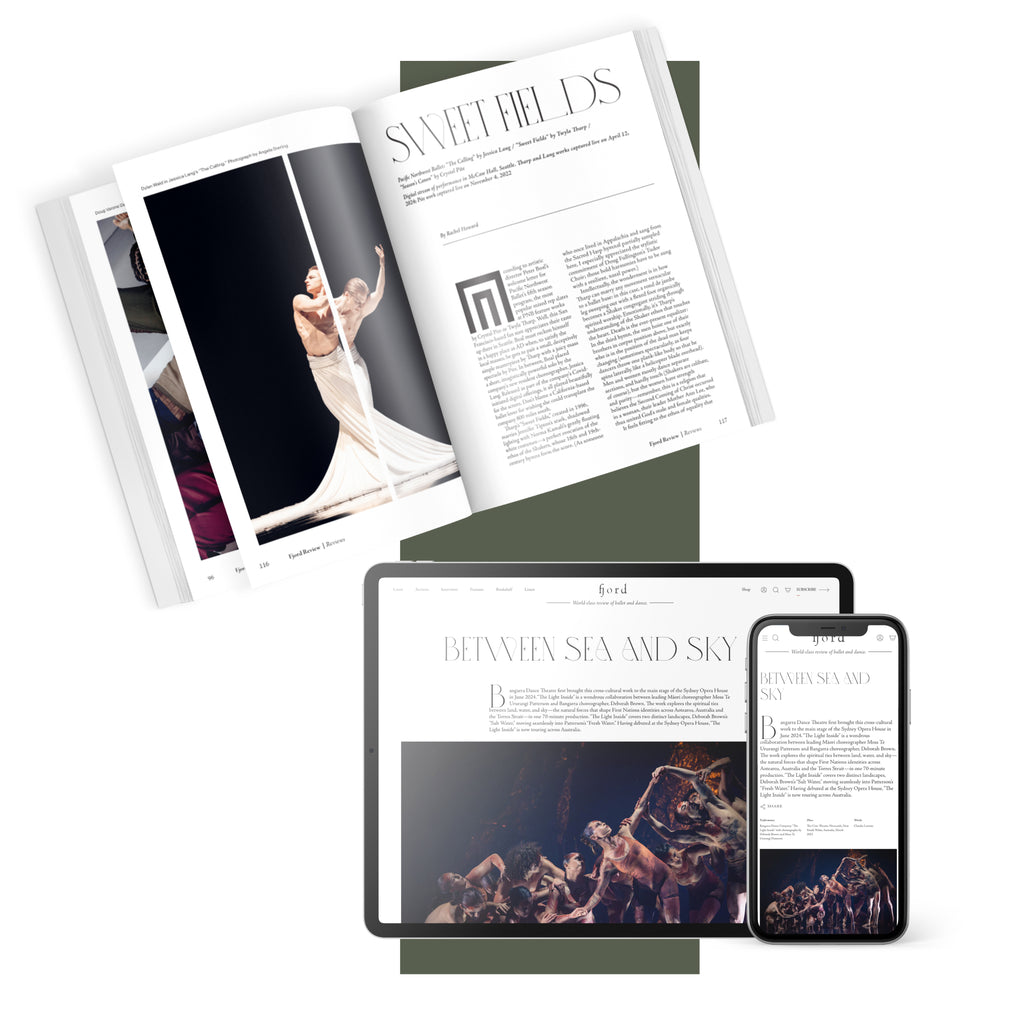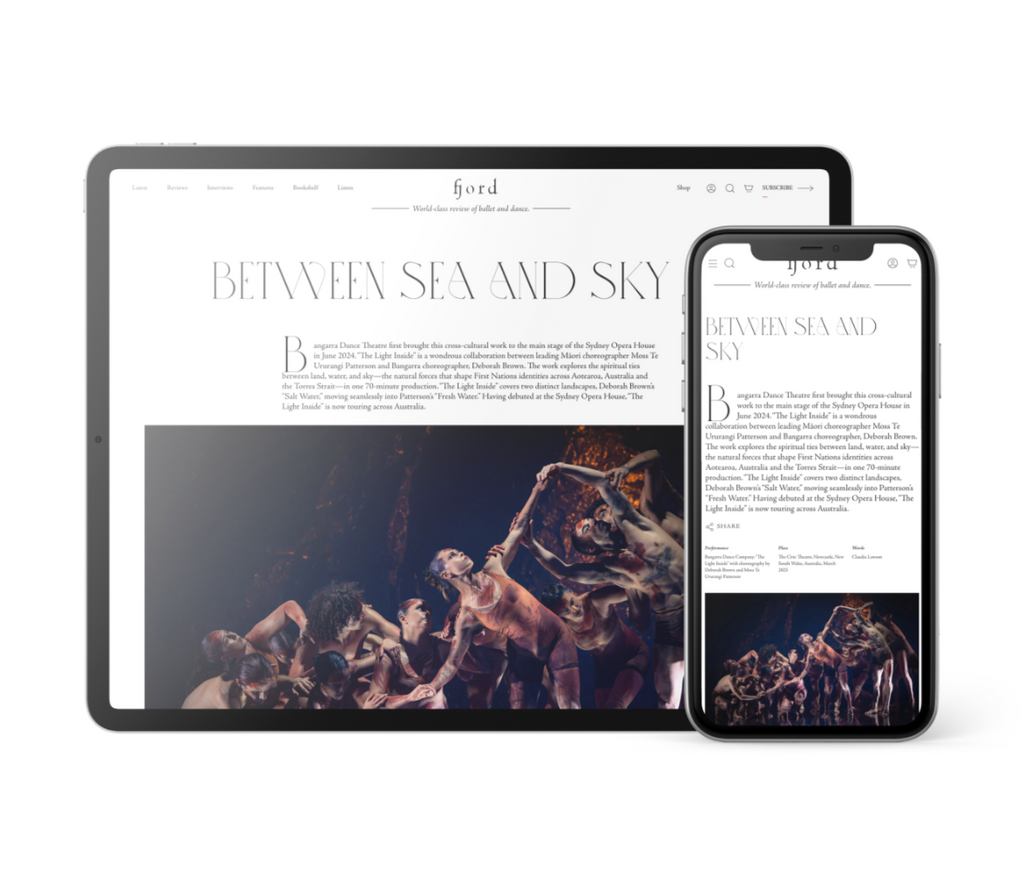What were the personal relationships like between Rauschenberg and Cunningham and Rauschenberg and Brown?
Francine: Rauschenberg met Cunningham at Black Mountain College, where he attended on and off in the 1940s and 1950s. Cunningham and John Cage came in one summer and did, I believe, a seminar. That was when the first “happening” took place. It was Rauschenberg’s introduction to that type of working. And then he traveled with Cunningham in lighting and costumes, and they became involved in collaborating. In the 60s, Rauschenberg was recognized on his own as a visual artist and stopped working as much with Cunningham and Cage.
Brown and Rauschenberg were involved in Judson Church together. Rauschenberg actually choreographed 13 works in the 1960s, and Trisha participated in several of those. We have a lot of photographs of her in his loft, wearing wedding dresses, eating saltines, all the esoteric things that he had his dancers do. Those were very much collaborative dialogues. And we also have correspondences in the archives all throughout their lives, and it’s not all about dance: It’s about personal things. I think they had this friendship that went well beyond collaboration.
Kirstin: Rauschenberg has a lifetime membership to the Trisha Brown Dance Company Board. Our bylaws say, “Lifetime Appointee.”
Francine: Rauschenberg was also keenly aware that choreographers and dancers were in a different economic bracket than visual artists. He tried to support those relationships in the ways that he could, to try to bridge that gap.
That’s something that the Rauschenberg Foundation has continued to put forth—you offer Dancer Emergency Grants, which provide funds for dancers who face dire financial emergencies, in addition to other resources. The Foundation states that “it builds on the legacy of the artist, emphasizing his belief that artists can drive social change.” I don’t think of Cunningham or Brown as particularly political artists—could each of you comment on this idea of “driving social change,” and how that might be interpreted through each artist’s legacy?
Francine: When you think about performance and collaboration, you don’t immediately think about social change but, social change is a shift in the way that people interact and live together. So, looking at altering norms and values and believed behaviors: that is what a collaboration is. Particularly when Rauschenberg was working with both Brown and Cunningham, he was really collaborating in the true sense. Bob said once that his costumes and sets could get him into trouble with Merce, so they were constantly negotiating and challenging each other to rethink norms. They were thinking outside of their field and disciplines. Both Merce and Trisha pushed the boundaries about how dance is perceived and seen. Then, you have an audience that is getting their boundaries pushed, and ideally, that can be pushed into how they think about other things.
Andrea: I love what you said about challenging the norm, Francine, and I think that the way Merce and John worked with chance was to challenge their own norms, creating possibilities. That was just built into their process of making dance. Then part of our mission for the Cunningham Trust today is to make the work more accessible and to create ways to enter into the work for people who don’t know about it or would like to try it.
Kirstin: I think everything that Francine and Andrea have said about pushing the norms, changing the way we look at dance, changing the way we look at a body on stage: this was change that Trisha was maybe not overtly pushing, but was in her spirit and her experimentation. Also, Trisha was working in New York during the ‘60s and ‘70s. She was a student at Mills College in the ‘50s. In the ‘50s, a woman going to school was studying education or nursing—you had very few options. For her to come out of Mills and decide that she was going to be an artist, that alone was a real pushing for social change. Trisha was never really overtly political, but I think her work, in some regards, was a political act, whether she wanted it to be or not.
Francine: I think it’s really important to look at the time frame, as you mentioned, Kirstin. What a shift in social change is now is different than what it was. We’re looking at how we take these things now and continue to adapt them so that it does continue to push forward.
I think it’s really important as legacy organizations, for us all to think of that. You want to keep the work alive in a contemporary sense. You change interpretations, leaving it open, so you’re able to present the material to an audience. Then, you let people come up with their own ideas and thoughts and takeaways from them. That’s what’s really important.











What an informative interview. Thank you so much.